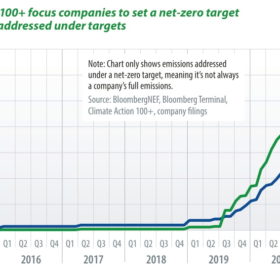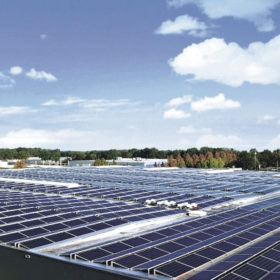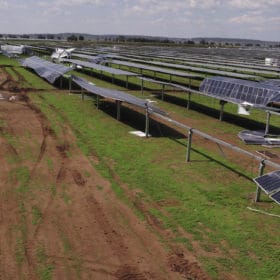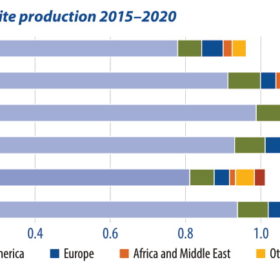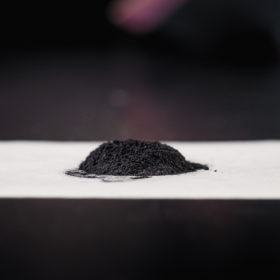BNEF’s bullish outlook for corporate clean energy procurement
Corporate clean energy procurement continues to set new watermarks. In 2020, companies announced a record 25 GW of clean energy PPAs throughout the world, marking the fifth consecutive year of growth. As part of the pv magazine UP Initiative’s quarterly focus on sustainable electricity, Kyle Harrison, head of sustainability research at BloombergNEF, addresses key questions about the long-term outlook for corporate procurement.
Both sides for C&I
The commercial and industrial sector has been called the underdog of the U.S. solar market, as it usually plays second fiddle to its larger, more visible residential and utility segment siblings. But C&I’s ultimate multi-gigawatt potential has never been in dispute. Aaron Thurlow, general manager at Longi Solar, makes the case for bifacial technology in the C&I segment.
Final thought: More power to the roof
Juergen Reinert, CEO of SMA Solar Technology AG
pv magazine Events 2021
In 2020, we welcomed a host of amazing speakers, partners, and participants to our events. We also successfully transitioned our live events from in-person experiences to virtual platforms to continue our meaningful conversations and sharing of knowledge, despite the global pandemic.
A new era for battery materials
Every year, chemical and energy companies produce $15 billion worth of commodities such as carbon black, silicon oxide, and aluminum oxide, for manufacturing purposes. Engineers do this by pumping chemicals into a flame and collecting material formed in the fire, in an approach known as flame spray pyrolysis. This approach, according to scientists at Argonne National Laboratory, has the potential to create more advanced materials for use in next-generation storage batteries.
Polish PV in 2021
According to Agencja Rynku Energii S.A., the total capacity of solar PV plants in Poland reached almost 4 GW at the end of December 2020. Once a black spot on the PV map of Europe, Poland ranked fourth in 2020 among EU countries for PV growth, after Germany, the Netherlands, and Spain. In 2020 alone, the country installed almost 2.7 GW of new PV. But there are grid connection headwinds in sight, writes Piotr Mrowiec from Rödl and Partner.
Dynamics driving insurance costs
While utility-scale solar assets are surging in popularity with investors, there are a number of emerging challenges that energy operators need to keep in mind, writes Andrew Slevin, CEO of John Foord.
The ‘other side’ of batteries
Graphite’s pivotal role in electric-vehicle battery technology is coming under increasing scrutiny. Graphite is almost exclusively produced in China, and while the processing of the mineral poses serious environmental issues, the alternatives appear costly. Ian Morse looks at what’s next for critical graphite supplies.
Dial manganese for stability
Often sidelined by nickel and cobalt when it comes to batteries, the metal manganese is finding proponents in science and industry – in particular, by those attempting to avoid supply and cost issues. Ian Morse reports on the role of manganese in battery cell production.
RE100 and the corporate renewable electricity boom
In 2020, corporate renewables purchases hit a record 23.7 GW. Much of this growth has been led by a non-profit global initiative, RE100, which is headed by the Climate Group and the Carbon Disclosure Project (CDP). Launched in 2014, 316 companies from more than 175 markets have now committed to buying 100% renewable electricity. As part of the UP Initiative, pv magazine spoke to Mariana Daykova, senior manager of renewable energy at CDP and its interim RE100 lead, about the progress that has been made and what’s in the cards going forward.
